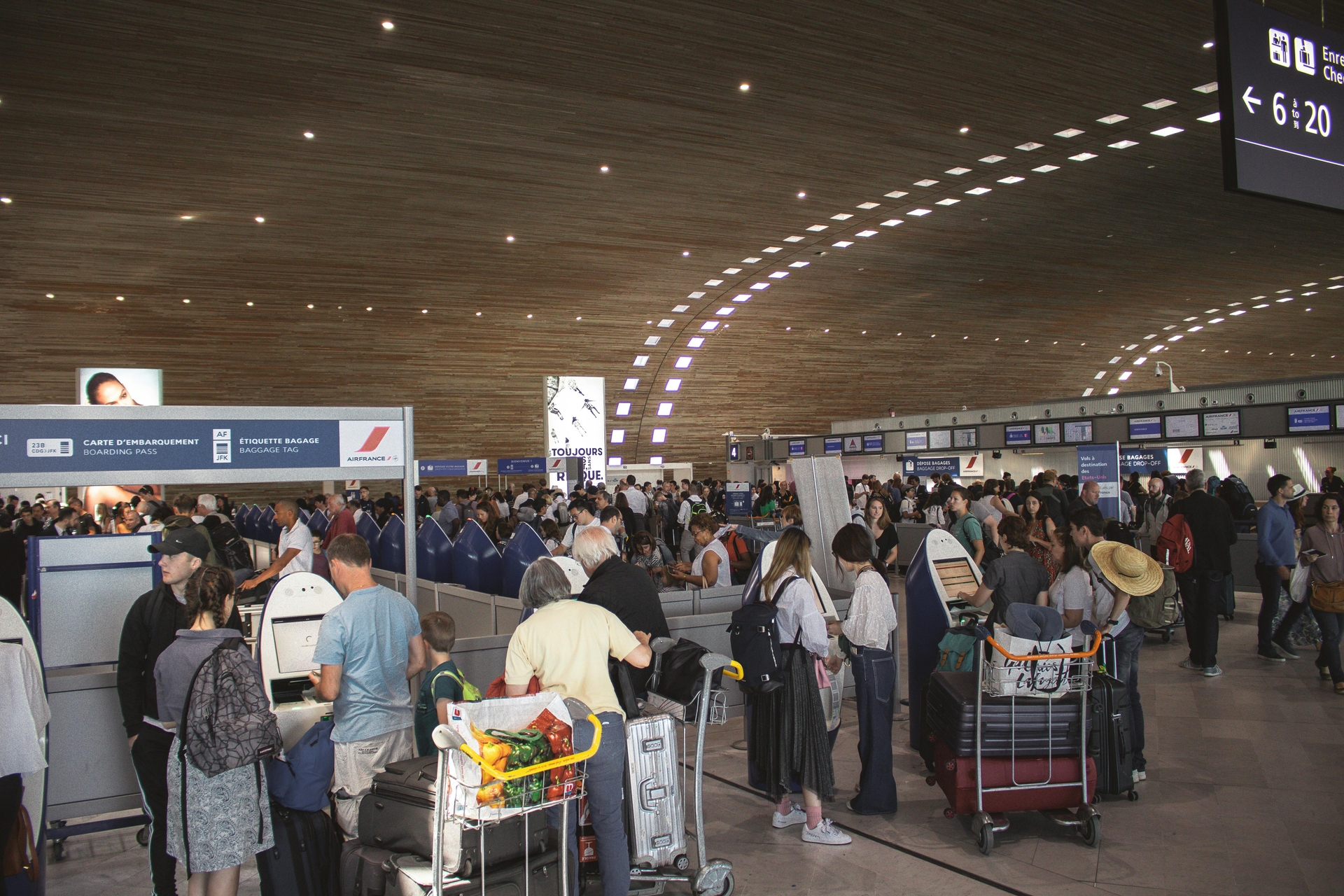
AeroGenie — Your Intelligent Copilot.
How ePlaneAI is Revolutionizing Aviation Procurement with Blockchain
June 13, 2025
Counterfeit parts are grounding fleets. ePlaneAI is changing that with blockchain-powered procurement—bringing traceability, trust, and automation to aviation.
A counterfeit crisis meets a tech solution
The aviation industry is grappling with a pernicious, growing problem: counterfeit parts.
In 2023, AOG Technics was caught distributing fake components backed by forged release certificates for one of the world’s most widely used jet engines, the CFM56, found on aircraft like the Boeing 737 and Airbus A320.
Investigations uncovered over 70 falsified certificates affecting at least 50 unique part types, sending shockwaves through the global aviation supply chain and raising urgent questions about traceability, safety, and supplier accountability (Satair).
This high-stakes environment is forcing aviation leaders to rethink procurement from the ground up. Legacy systems are no match for modern fraud tactics or today’s regulatory demands. Fortunately, blockchain, the same technology underpinning Bitcoin and other cryptocurrencies, is emerging as a critical tool for securing procurement, verifying parts, and delivering supply chain transparency.
AI-powered solutions, like ePlaneAI, are leading the charge.
With powerful automation and blockchain procurement technology, ePlaneAI offers aviation companies a smarter, more secure way to buy, sell, and verify aircraft parts.
Blockchain 101 for aviation
At its core, blockchain is a decentralized digital ledger that records transactions in a series of secure, time-stamped “blocks.” Once added, these records become part of an immutable chain that’s transparent, permanent, and tamper-resistant, making it ideal for industries where traceability and trust are paramount.
In aviation, blockchain holds major potential. It can be used to permanently track the full lifecycle of a part, from manufacturing and certification to installation, flight use, maintenance, and resale.
With every update securely logged and visible across approved stakeholders, blockchain minimizes the need for manual audits, third-party verification, or back-and-forth document checks.
Does aviation blockchain technology use non-fungible-tokens (NFTs)?
Not exactly, but the industry does use NFT-like tokenization.
While aviation companies aren’t minting NFTs on public blockchains like Ethereum, they are using blockchain technology to assign unique, tamper-proof digital identities to aircraft parts. These digital records serve a similar purpose: authentication, traceability, and lifecycle verification.
ePlaneAI, for example, is actively exploring blockchain solutions to strengthen part authentication. Its platform already offers Spec 2000–compliant data logging and AI-driven insights, helping stakeholders verify a part’s provenance, regulatory compliance, and condition in real time.
Who’s using blockchain in aviation today?
Several major players have begun implementing private or “permissioned” blockchains to track aircraft components:
AFI KLM E&M + Parker Aerospace:Use SkyThread, a blockchain-based system that assigns each part a digital record to track manufacturing, usage, and repairs. These aren’t NFTs, but unique blockchain-backed IDs (Aviation Week).
Honeywell’s GoDirect Trade:Uses blockchain to store digitally signed certificates tied to a part’s compliance history and ownership trail—again, not NFTs, but similar in function (Honeywell Aerospace Technologies).
SITA + Cathay Pacific + HAECO:Piloted a blockchain system to log part movement and maintenance records, aiming to eliminate fraud and streamline audits (SITA).
How are digital identities similar to NFTs?
These digital records share several traits with NFTs:
- Unique
- Tamper-proof
- Stored on a blockchain
- Used to verify authenticity and ownership history
But there are key differences:
- Public vs. private: NFTs live on public blockchains like Ethereum. Aviation systems use private, access-controlled networks for security and compliance.
- Ownership and transferability: NFTs are tradable assets, often tied to art or media. In aviation, a part’s digital ID is a non-transferable audit trail—it tracks use, not ownership in the crypto sense.
- Who holds the record: NFTs are held in personal digital wallets. Aviation records are maintained by manufacturers, MROs, and airlines within closed ecosystems.
The aviation industry borrows the structure of NFTs—unique, immutable, blockchain-based records—but not their behavior. These digital identities aren’t bought, sold, or stored in wallets. They’re built for traceability, safety, and compliance, not speculation.
Aviation companies likely will not move fully to NFTs because they don’t want transparency for everyone; they want controlled transparency for the right parties. That’s why many are investing in private blockchain systems that offer the benefits of unchangeability and traceability without the risks of public exposure.
A further look into traditional aviation procurement
Despite the cutting-edge innovation that defines aviation, the behind-the-scenes procurement processes remain surprisingly manual and fragmented.
Purchasing departments are often buried in a mountain of email RFQs, handwritten part records, and disconnected software and ERP systems that don’t talk to each other. According to PricewaterhouseCoopers, critical aircraft data is commonly scattered across up to 40 different systems, each owned by different stakeholders who may be reluctant to share information (PwC).
Blockchain solves for this broken approach that leads to costly inefficiencies. Blockchain addresses common issues such as duplicate or missing documentation, counterfeit or non-compliant parts being used, inefficient maintenance scheduling, inaccurate maintenance records, delayed turnaround times, and grounded aircraft
Warranty disputes and compliance audits become easier to resolve with a shared, verifiable record for every part’s journey.
ePlaneAI’s blockchain-driven procurement layer
ePlaneAI addresses procurement and MRO challenges head-on with a modular blockchain solution designed specifically for the aviation sector. ePlaneAI’s procurement system uses smart contracts and blockchain event logging to automate and secure the entire lifecycle of a part—from RFQ to installation.
Key components include:
- Smart contract modularization for procurement workflows, based on Spec2000 messaging standards.
- Immutable blockchain event logs that capture all usage, maintenance, and ownership changes in real time.
- Integration via SDKs, HTTP services, and Kafka for seamless connectivity with legacy systems.
ePlaneAI even stores critical data on-chain (e.g., ownership, condition, transaction history) while moving less critical information off-chain using secure cloud storage like Azure Blob.
This blockchain-backed layer is a production-ready, aviation-native tool that eliminates guesswork and ensures every party in the supply chain has access to the same trusted data.
Blockchain + AI
While blockchain provides the secure foundation for traceability, ePlaneAI layers artificial intelligence on top for real-time insights and predictive power. The synergy between AI and blockchain is what sets ePlaneAI apart from typical digital procurement tools.
Examples of this synergy:
- Parts Analyzer leverages machine learning to analyze over 300,000 trending aviation parts, identifying “hot” components, forecasting future demand, and flagging stale inventory based on global search patterns and real-time fleet data.
- InventoryAI uses advanced forecasting algorithms, demand segmentation, and PAR-level optimization to reduce overstock and understock situations, problems that cost one client over $12 million annually before switching to ePlaneAI’s platform.
- EmailAI automates responses to high-volume RFQs, AOG requests, and repair order inquiries using natural language processing (NLP). EmailAI prioritizes requests by urgency (grounded aircraft, critical, routine), sentiment, and customer value, enabling 24/7 intelligent email triage and response.
Blockchain anchors the data that powers the models. By helping ensure that every datapoint is verifiable and tamper-proof, AI can confidently process information and deliver accurate predictions. Stakeholders can move from outdated spreadsheets and secondhand intel to making informed decisions from real-time, validated insights.
Smart contracts in action: Automating the procurement lifecycle
Smart contracts power ePlaneAI’s hands-free procurement system. These self-executing agreements live on the blockchain and automatically trigger actions, like releasing payments, updating inventory, or confirming part receipts, when predefined conditions are met.
Here’s how it works in a real-world aviation context:
- A buyer issues an RFQ, which is auto-categorized and matched to approved suppliers.
- A smart contract validates the supplier, part specs, pricing, and preferred billing.
- Once a quote is accepted, the contract automatically issues a PO.
- Shipping updates, invoice details, and final delivery confirmation are all logged as blockchain events, eliminating any disputes or reconciliation errors.
ePlaneAI’s smart contract system supports multilingual invoicing and B2B checkout terms, dynamic pricing adjustments tied to market demand, and full audit trails for every transaction.
ePlane builds trust, speed, and compliance directly into every step of the aviation procurement process.
Aviation marketplace transformation
Beyond back-end procurement, ePlaneAI is redefining how aviation businesses connect, transact, and scale. Its AI-optimized aviation marketplace functions like a B2B Amazon for aircraft parts, allowing airlines, MROs, and suppliers to buy, sell, and manage inventory in a fast, intuitive, and transparent environment.
What sets ePlane’s Marketplace apart is the seamless integration of real-time ERP data, AI-powered search, and global e-commerce flexibility offered within a single platform.
Key features include:
- Dynamic, automated pricing based on contractual terms, part urgency, and current market demand
- Multilingual checkout with support for partial payments, deposit handling, and net terms
- In-platform chat negotiation and unified document storage (e.g. RFQs, quotes, invoices)
- Autonomous customer support through JET, ePlaneAI’s conversational AI bot. Customers can engage with JET across Viber, WhatsApp, Apple Messaging, and other similar platforms.
Additionally, ePlaneAI is actively exploring institutional-grade blockchain applications to enhance traceability and documentation authenticity. This will enable buyers to verify part histories—including usage, certification, and chain-of-custody—with confidence.
By reducing transaction friction and enabling smarter sourcing decisions, ePlaneAI’s marketplace brings aviation commerce into a new era of trust and automation.
Industry adoption & roadblocks
ePlaneAI isn’t the only player betting on blockchain in aviation. As outlined earlier, KLM, Air France, and Cathay Pacific are already leveraging the technology to verify and track aircraft parts. Heathrow and Zurich Airports have piloted blockchain solutions to streamline cargo container logistics—reporting measurable reductions in container load times and human errors (Airport Technology).
Yet despite that momentum, adoption remains slow across much of the industry. Notably, the world’s three largest airlines—Delta Air Lines, United Airlines, and American Airlines—have not yet implemented blockchain technology for parts traceability or maintenance tracking (CAPA, Paxex.Aero).
There are several key reasons why:
- Regulatory uncertainty: There’s still no clear compliance framework governing blockchain use in aviation. Without regulatory clarity from bodies like the FAA, EASA, or ICAO, major airlines are hesitant to build mission-critical infrastructure on technology (DAC Beachcroft).
- Interoperability concerns: These airlines rely on deeply entrenched legacy systems for MRO, inventory, and procurement. Integrating decentralized or blockchain-based platforms with those systems can require substantial reengineering—an expensive, high-risk endeavor for enterprises operating on razor-thin margins.
- Risk aversion and procurement cycles: Major carriers operate under long, risk-averse procurement cycles. New technologies often undergo years of vetting and testing before being considered for core operations. Blockchain, often misunderstood or conflated with cryptocurrency, still faces an uphill battle to be perceived as stable, mature, and safe for regulated environments.
- Internal knowledge gaps: Many aviation IT and operations teams simply lack the blockchain-specific expertise to evaluate or implement these systems effectively. Without in-house champions or specialized teams, most organizations default to the status quo—even if it's inefficient.
These concerns are exactly why ePlaneAI shines. It’s designed to sidestep these common roadblocks:
- Compliant from the ground up: Built around aviation standards like Spec2000
- Plug-and-play integration: Offers flexible APIs, SDKs, and connectors that work with today’s ERP and MRO systems
- Built-in intelligence: ePlaneAI’s aviation-specific AI tools reduce the technical lift required to deploy blockchain-backed solutions—making them accessible even to organizations with limited internal blockchain expertise
ePlaneAI bridges the gap between next-gen traceability and aviation’s real-world constraints, helping to accelerate adoption in an industry that knows it needs to evolve—but can’t afford to bet on the wrong infrastructure.
The future of blockchain in aviation procurement
The long-term potential of blockchain in aviation is near limitless. Forward-looking companies are already building the foundation for a future in which blockchain-anchored digital records become the industry standard. More airlines and MRO providers are beginning to use blockchain to track part usage, maintenance activity, and certification updates with greater accuracy and transparency.
As a result, predictive maintenance is guided by real-time operational data rather than estimates, helping reduce downtime and extend the life of critical assets. Warranty claims and leasing agreements draw from tamper-proof blockchain event logs, streamlining resolution and minimizing disputes. Inventory planning also becomes more proactive and responsive, as AI and blockchain work in tandem to enhance forecasting and reduce costly AOG events.
This future is underway now, with platforms like ePlaneAI developing and deploying systems that bring AI automation, blockchain integrity, and much-needed speed and modernization to procurement and inventory workflows.
In short, scalable, aviation-ready solutions for OEMs, MROs, and operators are here.
Ready for takeoff
Tariffs, market volatility, and severe weather may be out of your control—but counterfeit parts, fragmented data, and outdated procurement systems don’t have to be. Blockchain offers a practical, proven path to greater traceability, trust, and cost efficiency.
For aviation leaders focused on resilience, the opportunity lies in modernizing what you can control. Now’s the time to streamline operations, strengthen supplier confidence, and take procurement from reactive to intelligent.
Explore how ePlaneAI can transform your procurement process—from fragmented and reactive to autonomous, secure, and intelligent.
Aviation Maintenance Trends That May Gain Momentum in Uncertain Circumstances
Aircraft are staying in service longer, supply chains are a powder keg, and the tech is evolving overnight. Discover the maintenance trends gaining momentum and what they mean for operators trying to stay airborne and profitable.

October 2, 2025
Choosing the Right Aircraft Parts with Damage Tolerance Analysis
The future of aviation safety is all about the parts. Authentic, traceable parts bring optimal damage tolerance and performance to fleets for maximum safety and procurement efficiency.

September 30, 2025
How to Enter New Aviation Markets: The Complete Guide for Parts Suppliers
Breaking into new aviation markets? Learn how suppliers can analyze demand, manage PMA parts, and build airline trust. A complete guide for global growth.

September 25, 2025
5 Aviation Marketing Strategies You Should Use to Sell to Global Airlines
Airlines face shrinking margins and rising expectations. See how top strategies—dynamic offers, partnerships, personalization, and more—can close deals with global carriers.
